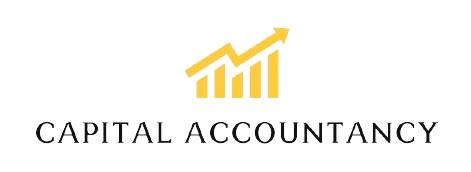What does workforce planning mean in HR?
Got great plans for your business? Make sure your HR team is up to speed so they can build a workforce ready for what’s ahead.

If your business is scaling up or navigating change, sooner or later that will change how you approach your people strategy. Workforce planning helps you prepare for these milestones, guiding your decisions on recruitment, training and role design.
Gone are the days when you just need to think about filling vacancies.
The right approach helps you prepare for future skillset requirements, and align your people with your business roadmap.
Here’s what this article will cover:
- What is workforce planning and development in HR
- How does workforce planning integrate with wider HR programmes?
- Why workforce planning is important
- Benefits of workforce planning
- Strategic vs operational workforce planning
- What is the workforce planning process
- Common workforce planning challenges
- Final thoughts
Humanising HR: the magic of AI in empowering people and processes
Harness the power of AI to boost HR efficiency and engagement, foster smarter decisions, and enhance human-centric processes.

What is workforce planning and development in HR
Workforce planning is about making sure your business has the right people in the right roles—both now and in the future.
It means thinking ahead about the skills your team needs, where talent gaps might appear, and how to fill them.
This process helps you align the workforce with your business goals, so you’re always ready to deliver what your customers expect.
Informing staff development
Planning alone isn’t enough—you also need workforce development.
That’s where initiatives like upskilling, learning and development (L&D), and succession planning come in.
These programmes help your current team grow into future roles, rather than always relying on new hires.
It builds loyalty because it shows that you value each person’s potential, not just their current output. When employees see that you’re willing to support their career progression, they’re more likely to stay and grow with your business.
It’s a display of trust that boosts morale and helps reduce turnover—increasing performance and keeping valuable knowledge inside your business.
How does workforce planning integrate with wider HR programmes?
Workforce planning links closely with many HR areas, from recruitment and onboarding to pay, performance and engagement.
Your decisions on those issues are all guided by the skills you’ll need in the next six months or year.
If you can hire more strategically and avoid last-minute staffing issues it’s easier for HR to focus training budgets where they’ll have the most impact.
Beyond hiring and training, planning also feeds into retention and well-being.
For example, if your internal data shows high turnover in one team, the HR team can look deeper at job design or support measures.
And when you’re planning for succession, workforce insights help you identify who’s ready to broaden their workload, and what support they might need.
Why workforce planning is important
Workforce planning gives you a clear view of how your people strategy supports your business goals.
It helps you understand what talent you have now, what you’ll need later, and how to bridge the gap.
Without this forward-thinking approach, it’s easy to be caught off guard by skills shortages or sudden changes in demand.
It also gives HR a stronger voice in business planning.
When you can back decisions with clear workforce data, you’re better positioned to influence budgets, hiring priorities and leadership conversations.
Workforce planning connects people strategy to commercial outcomes, helping the wider business stay agile and aligned.
Benefits of workforce planning
In short then, your efforts in planning lead to a workforce that can adapt as your business evolves.
But let’s look at the specific ways in which this works:
- Optimised staffing. You avoid over-hiring or staff shortages by matching roles to real needs.
- Reduced labour costs. It helps you plan ahead to use resources efficiently and control payroll spend.
- Stronger talent pipeline. You can identify skills gaps early and build a steady flow of appropriate candidates.
- Improved employee engagement. Planning aligns roles with skills and career goals, which boosts motivation and reduces turnover.
- Better training focus. You learn how to target development budgets for high-impact roles and skills.
- Increased agility. Your workforce becomes more flexible, responding faster to market or business changes.
- Data-driven decisions. You gain workforce insights that can guide long-term planning.
Strategic vs operational workforce planning
The final point in that list hints at the importance of taking two approaches to workforce planning—the long-term overview and short-term needs.
These can be loosely described as strategic and operational workforce planning:
Strategic workforce planning
Looking ahead over several years helps you prepare for future challenges and changes, such as entering new markets, restructuring teams, or adopting emerging technologies.
For example, if you plan to digitise your services in the next three years, strategic planning helps identify which roles will be needed, what training to offer, and when to hire.
The aim is to give your business time to build the right talent and reduce future risk.
Your efforts in workforce planning will also determine a talent management strategy to nurture and retain the right individuals for long-term growth.
Operational workforce planning
This shorter-term, more tactical approach ensures your team is positioned to meet current demands, within the next quarter or year.
For example, if you run a logistics company and expect a spike in deliveries during peak season, operational planning helps you organise shifts and manage temporary staffing.
This type of planning keeps things running smoothly, helps protect your staff against burnout and supports day-to-day productivity.
Humanising HR: the magic of AI in empowering people and processes
Harness the power of AI to boost HR efficiency and engagement, foster smarter decisions, and enhance human-centric processes.

What is the workforce planning process
Workforce planning is all about aligning your people with your business goals in a structured way. So naturally, it helps to take a structured approach to the planning process itself.
While every business is different, the steps below offer a reliable framework you can tailor to suit your size and industry.
1. Review your business goals
Start by understanding where your business is heading.
Look at your strategic objectives, expansion plans, and any external factors likely to affect your workforce.
2. Assess your current workforce
Take stock of the skills, roles and capacity you have now.
Include data on performance, staff attrition, contract types and what each person contributes to the business.
3. Forecast future needs
Identify what roles and skills you’ll need over the coming months or years.
This might include new capabilities, different team structures or greater flexibility.
4. Spot the gaps
Overlay the above forecast against your current workforce profile.
You may see that the current set up will fall short in terms of numbers, skills or experience.
Surpluses should also be flagged for action—these would indicate that your team may be larger than needed in certain areas, or that some roles are no longer aligned with your business priorities.
5. Build an action plan
Decide how you’ll address the gaps.
This could involve recruitment, internal training, role redesign or succession planning. Both gaps and surpluses need a response.
6. Implement and communicate
Put your plan into action and share it with relevant teams. Managers will take charge in orchestrating and delivering the changes.
7. Monitor and adapt
Check progress regularly and adapt your plan as needed. Use workforce performance data and feedback to track results and improve over time.
Common workforce planning challenges
Preparing for the future obviously makes sense, but what if your preparations themselves are based on misguided assumptions or erroneous practices?
Here are some common pitfalls—and how to avoid them:
Poor forecasting
Use clear business goals and real-time data to improve forecasts.
Inaccurate predictions could lead to the very problem you’re trying to avoid, such as staffing gaps or oversupply.
Invest in tools that accurately track skills, performance and turnover.
Working in silos
If departments don’t share information, plans become fragmented.
Encourage cross-team collaboration and shared planning processes.
Again, appropriate tools and platforms eliminate this problem.
Misaligned goals
Through a lack of communication, HR and client-facing business units may be working toward different priorities.
Make sure that the relevant teams are involved in strategic discussions around workforce planning.
Limited stakeholder buy-in
Without support from managers or leadership, plans may stall.
Involve them early and show how workforce planning supports improved results across different departments.
Inflexible plans
A solid plan has to account for potential change, building awareness that the plan itself may have to change.
Plan for regular reviews to keep your strategy relevant and responsive.
Final thoughts
Workforce planning should be a core part of your HR strategy.
When embedded properly, it connects everyday people decisions with long-term business goals.
You’re building a workforce that can grow, adapt and deliver real value as your business evolves.
Using quality HR software to manage workforce planning will lead to results you can measure—from improved retention to better resource use and stronger employee engagement.
Use the best workforce planning tools to build a proactive strategy that keeps your business one step ahead and ready for change.
The post What does workforce planning mean in HR? appeared first on Sage Advice UK.
